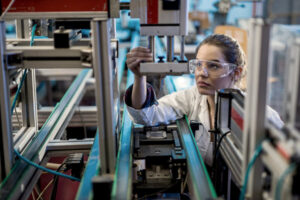In recent years, society has made significant progress in understanding disability and the importance of inclusivity. One model that has gained attention is the Functional Solution Model of Disability. This paradigm shift focuses on creating an inclusive society by removing barriers and addressing the functional limitations faced by individuals. In this article, we will delve deeper into the Functional Solution Model, its principles, and the positive impact it can have on people with disabilities.
Understanding the Functional Solution

The functional Solution Model of Disability moves away from the traditional medical or social models, which view disability as a personal tragedy or a social problem, respectively. Instead, it places emphasis on the functional limitations individuals face in their daily lives. This model acknowledges that people with disabilities can participate fully in society when appropriate accommodations are provided.
According to the Functional Solution Model, disability is not an inherent characteristic of individuals but rather a result of the interaction between an individual’s functional limitations and the environment. By identifying and addressing these limitations, society can remove barriers and create an inclusive environment for all.
Principles of the Functional Solution Model
Focus on Abilities

The model recognizes the unique abilities and potential of individuals with disabilities, shifting the focus from what they cannot do to what they can do. It promotes a strengths-based approach, encouraging society to harness and support the diverse talents and skills of people with disabilities.
Person-Centered Approach

The Functional Solution Model places individuals at the center of decision-making processes, considering their preferences, needs, and aspirations. By involving people with disabilities in designing solutions, society can ensure that accommodations are tailored to their specific requirements.
Environmental Adaptations

This model emphasizes the importance of modifying the environment to accommodate individuals with disabilities. It encourages the removal of physical, attitudinal, and communication barriers, making spaces and services accessible to everyone. This can range from installing ramps and elevators to providing assistive technologies and inclusive education.
Collaboration and Partnership

The Functional Solution Model recognizes that creating an inclusive society requires collaboration among various stakeholders, including individuals with disabilities, government bodies, organizations, and communities. By working together, society can address systemic issues, promote inclusivity, and advocate for policy changes that benefit everyone.
Positive Impact and Benefits
Embracing the Functional Solution Model of Disability can have numerous positive impacts on individuals, communities, and society as a whole:
- Inclusion and Equality: By removing barriers and accommodating functional limitations, the model promotes equal opportunities for people with disabilities. It fosters a more inclusive society that values diversity and enables everyone to participate actively.
- Empowerment and Self-Advocacy: The model empowers individuals with disabilities to advocate for their needs and rights. By actively involving them in decision-making processes, it helps develop their self-esteem, independence, and confidence.
- Innovation and Creativity: Embracing diverse perspectives leads to innovation and creativity. The Functional Solution Model encourages society to tap into the talents and skills of people with disabilities, resulting in new ideas, products, and services that benefit everyone.
- Economic and Social Benefits: Inclusive practices have economic and social advantages. By creating accessible spaces and services, society can tap into the full potential of individuals with disabilities, promoting their employment and economic independence. It also fosters social cohesion, reduces stigmatization, and enhances overall well-being.
The Functional Solution Model of Disability provides a valuable framework for creating an inclusive society that values the abilities and contributions of individuals with disabilities. By focusing on functional limitations, removing barriers, and fostering collaboration, we can embrace diversity and build a world where everyone can participate fully. Let us continue striving for a society that celebrates inclusion, ensuring that no one is left behind.
What is next?
In our next installment, we’ll explore what is Social Identity or Cultural Affirmation Model of disability.
For more information on why accessibility is important in general, you can check out my previous blog post here.
For further information on how In our next installment, we’ll explore the importance of captions for individuals with hearing disabilities and delve into how we can promote digital products using captions with semantic markup to enhance accessibility for those with hearing impairments.to make your product accessible to your audience, contact our experienced design experts, check out our Accessibility IQ for your website, download our guide Digitally Accessible Experiences: Why It Matters and How to Create Them, read more from our UX for Accessible Design series.

